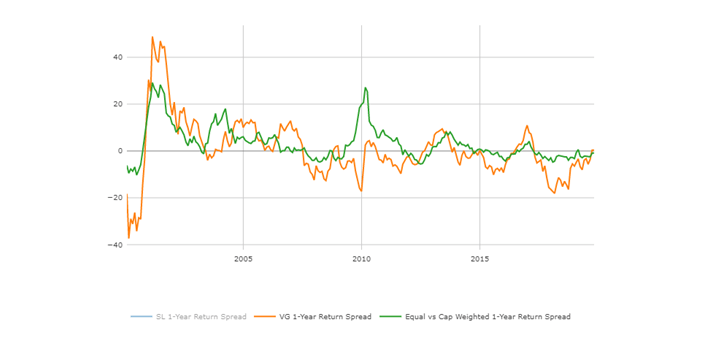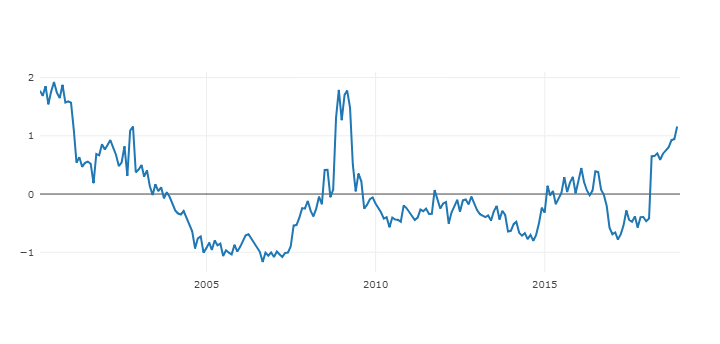Market Overview
We believe fundamentals drive long-term returns. Despite some ongoing worries about the pace of global growth, we think fundamentals are still supportive overall. Stay positive and keep long-term prospective!
US Economics
The US economy is healthy, with mostly hits and just a few misses in terms of economic indicators. In recent weeks we have seen a drop in jobless claims, a surge (to a 13-year high) in housing starts, respectable increases in existing home sales, uneven gains in retail activity, but a slowdown in industrial output and factory usage. Such a waltz (two steps forward, one step backward) is reminiscent of 2019. With a similar outlook in place on the consumer and industrial fronts this year, we expect similar picture in 2020. Given the confidence associated with record high stock prices, the steady rise in personal income, and the high level of consumer spending, we expect near-trend GDP growth, i.e between 2% to 2.5% this year.
Global Economics
According to JP Morgan, the last quarter will mark the low point of the latest growth slowdown, and a “third wave” of above-potential growth will start this year. Although they now project that global GDP growth dipped to 2% per annum last quarter (one of the weakest of the expansion), signs of a pickup this year are increasingly evident. The global composite all-industry PMI is consistent with 2.7% per annum growth in global GDP. At the same time, early 4Q GDP reports suggest the upturn is already getting underway in EM Asia, with China, Korea, and Taiwan. The waltz is as popular globally as it is in the US: the final demand backdrop for last quarter is looking softer than expected, with global consumer goods spending now tracking just a 1% per annum gain. However, much of the consumer weakness was early in 4Q while global auto sales look to have advanced in both November and December. Improving global employment gives key support to consumers, so we could see demand growth strengthen in the coming months.
Stock Markets
Earnings are proving supportive, with about 70% of the companies in the S&P 500 posting positive earnings surprises, as most results have been better than forecast. Signet’s actively managed equity strategies have even higher success rate with 80-85% of companies meeting or exceeding expectations across different portfolios.
Investment Regime Changes
The large-cap tech sector, that include interactive media companies like Google and Facebook, has outperformed the market every year since 2013 and in the first few weeks of 2020 is once again ahead, by more than +3 percentage points. This contributed to the Market Cap Indexes outperforming Equal Weighted ones YTD (see the graph below). The combination of double-digit earnings growth and an accommodative Fed causes some concern that a blow-off phase of this bull market may be underway. Empirical Research Partners (ERP) did work to gauge how close we are to the point of irrationality, where the trend proves ultimately self-defeating. They examined valuation statistics based on past results, comparing the here and now with forecasts five years into the future. They also reviewed financial leverage, the supply of capital, and behavior of the tech stocks themselves, looking for group think and emerging controversies. ERP concluded that the bottom-up data isn’t extended enough to put us near the precipice. Rather they believe the risks are macro in nature, focused as usual, on rates and the economy.
In the past four years the earnings of tech stocks grew 1.7 times as fast as those of the S&P 500. The stocks now discount a continuation of that trend, while the analysts’ five-year earnings forecasts envision a 1.6:1 differential. By comparison, in 2000 the advantage being discounted was a preposterous four-to-one. Back then free cash flow margins, adjusted for stock options used for employee compensation, were zero, and now they’re close to 20%. Skepticism has faded, replaced by what is thus far rational enthusiasm. Financial leverage is up, but doesn’t look ominous, with most of the risky debt issued by companies owned by private equity firms. ERP believes we’re still in a solid fundamental environment for the technology companies. Irrespective of the mostly positive outlook, it may make sense some pre-emptive risk management may make sense to trim recent tech winners, as a form of pre-emptive risk management. More broadly, ERP emphasizes the importance of interest rates, various risk indicators and the earnings reports for signs that a storm front is brewing. So far, the sea is calm.



























































































